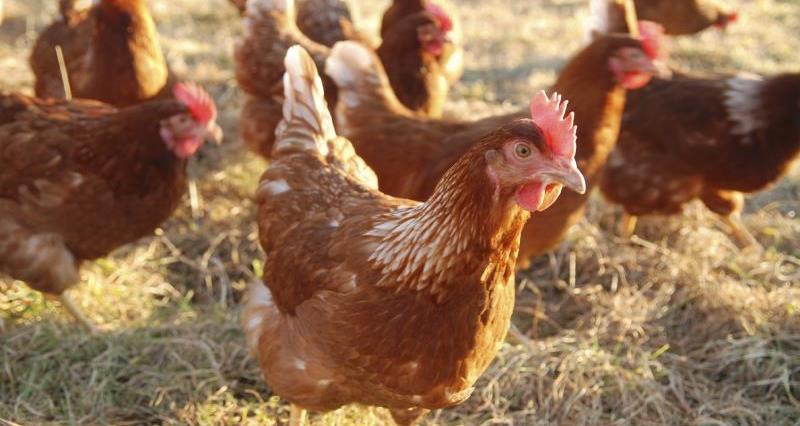Avian Influenza Higher Risk Areas: How did we get here?
The first survey shows important bird areas for migratory birds; as evident on the map these are typically located around coastal areas. The second map shows the wild waterfowl annual count; this has a much larger spread. Whilst this spread is concentrated around some coastal areas, particularly on the east coast, it includes significant inland areas. The third map is gull roosts; this is important to gain a full picture of HRAs as these are, on the whole, located inland and not necessarily related to bodies of water or wetlands.
The Chief Veterinary Officer has said that gulls are of particular concern because they are widespread and have a large ranging area in comparison with resident wild waterfowl. Wild waterfowl typically have a ranging area of 5km; therefore the inclusion of 5km zones around areas of wetland aims to captivate most of the risk for most of the time. The fourth factor included in HRA designation is the outbreaks which have occurred to-date in commercial units or backyard flocks.
For more information on how Defra has designated HRAs please see a presentation from an Avian Influenza stakeholder webinar which the NFU took part in last week: Avian Influenza stakeholder presentation.
The NFU continues to work with retailer contacts to urge them to continue to support the free range industry. To date we have held valuable discussions with Aldi, Lidl, Morrisons, Tesco and Co-Op on this issue and will continue conversations in the coming weeks.

What do members need to do?
In order to comply with Defra’s proposed amendments to the Prevention Zone post 28 Feb members need to firstly establish if they are in a Higher Risk Area and then consider the options available:
In a Higher Risk Area:
- Continue to house birds*
- Net entire range area in order to allow birds access to range
Outside a Higher Risk Area:
- Continue to house birds*
- Net entire range area and allow birds access to range area
- Allow birds supervised access to fenced outdoor areas (range) whilst complying with additional biosecurity measures
*Please note option one would mean that post 28 Feb free range status would be lost
Read our member briefing on HRAs here: Higher Risk Areas FAQs.
It is vital that producers are fully compliant with the new Prevention Zone requirements, if you do not comply and your flock subsequently contract Avian Influenza you are at risk of severe consequences, in the form of prosecution or an undisclosed fine.
Whilst these requirements are currently only a proposal, producers need to act promptly as subject to any significant changes between now and the 28 February the amendments proposed will become legally enforceable.
Let us know if you can't comply...
The NFU wants to ensure that our members are able to fully comply with the amended Prevention Zone if it comes into force. If you have any concerns about the new measures or consider certain aspects difficult to comply with then it is important you raise these views with your regional poultry advisor; we are happy to raise these issues on your behalf with Defra.
Your regional NFU poultry advisers:
- North West - Helen Wainwright
- North East - James Mills
- West Midlands - George Bostock
- East Midlands - Andy Guy
- South West - Will Frazer
- South East - Georgia Craig
- East Anglia - John Newton
We must stress that in order to be compliant with the Prevention Zone requirements and in preparation for allowing your birds range access on 28 February then you must take action now to reduce the risk of infection from a contaminated range. The starting point for such action could be the undertaking of a risk assessment in conjunction with your vet. All actions should be well documented so that evidence of compliance can be provided if necessary.
It is important to note that the consequences of breaching the Prevention Zone regulations are likely to be severe, in the form of prosecution or an undisclosed fine, so compliance and proof of compliance, is vital.
Checklist: What should you be doing?
- Establish if you are in a Higher Risk Area
- Regardless of whether you are in a HRA or not assess your ability to comply with Defra’s Prevention Zone amendments
- Raise any areas of concern related to meeting Defra’s guidelines with your regional poultry advisor
- Take action now in order to be compliant post 28 Feb
- Stringently document all action that you take
- Be aware of the severe implications of non-compliance
